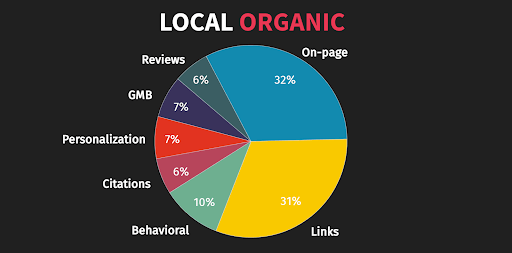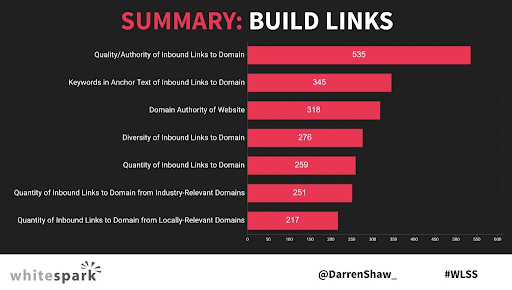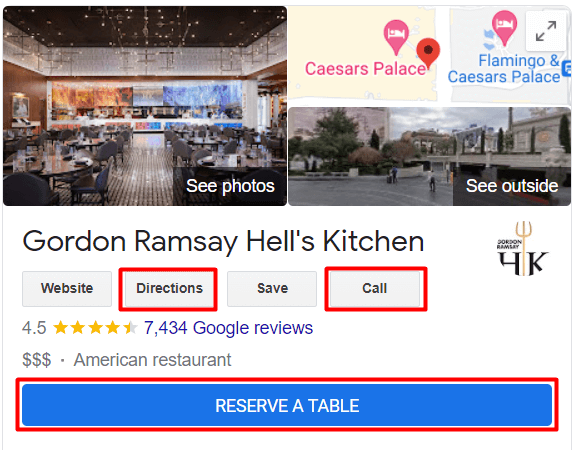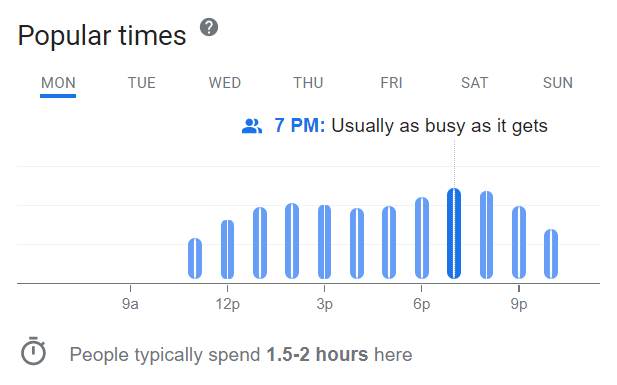•
15-minute read


Local SEO has always been different from traditional SEO. These two have different ranking factors, despite being closely interconnected. And, as 77% of customers use Google to find local businesses, the importance of local SEO cannot be underestimated.
How is local SEO different? The key difference here is that with local queries Google ranks not separate website pages but real local businesses. Or, in other words, entities. So I thought it makes a lot of sense to look at the local ranking factors we know from the entities-based perspective.
These days, many experts speak about entities in SEO — this trend seems the new black of 2021, and, judging by where Google is heading in its development, it is here to stay.
According to Google, an entity is:
A thing or concept that is singular, unique, well-defined, and distinguishable.
This means that anything can be an entity — an object, a person, a color, a location, etc. Literally anything.
According to Google’s 2015 patent named Ranking Search Results Based On Entity Metrics, entities have four specific ranking factors:
Relatedness. To better understand the concept of relatedness, we need to refresh what we know about Word2Vec. In short, this mechanism lets Google understand the words and concepts and the way they are interconnected.
The most important thing here is that Google tries to understand these concepts by putting them on a vector graph. On this graph, all the concepts have their unique positions determined by their relations to one another. For example, Rome is positioned to Italy in the same way as Paris to France. While both Italy and France have the same vector distance to Europe as Mexico to America.
Thus, for Google, an entity is a set of relations, rather than an independent concept. Its place in Google’s “picture” of the world is determined by its relatedness to other entities.
Notability. Notability is the entity's relative importance. The key idea here is that you cannot compare global popularity metrics (links, mentions, etc.) of entities in different niches, since the niches themselves differ in their popularity. Thus, you get a common comparison metric when adjusting your calculations for the importance of the niche by dividing the entity’s popularity by the importance of its specific niche.
Contribution. As opposed to notability, contribution only focuses on a particular niche. It shows how much weight an entity has in its industry, and is determined by external signals (e.g. reviews). To gain the most contribution, your entity needs reviews and mentions from industry experts or opinion leaders (i.e. other famous entities). Say, if your entity is a restaurant, you’d need reviews from food critics. If it's a hotel, famous travel bloggers’ reviews would help.
Prizes. This metric is based on the prizes an entity has received. Literally. Real prizes in real life. Michelin stars for restaurants, Oscars for cinematography, Noble prizes for scientists, etc. The more “important” a prize is, the more value it adds to the entity’s rank.
When it comes to local SEO, Google isn’t giving us much. We know local results are based primarily on relevance, distance, and prominence.
And while everything’s more or less clear with distance, what should we do with relevance and prominence?
Since every local business is an entity, and local SEO is all about ranking entities, it is only fair to transfer what we know about entities in general to the local SEO specifics we have to deal with. Thus we can better understand what to optimize for local search and how.

So in the coming sections of this guide, I’ll try to keep entities in mind while looking through all the key local SEO ranking factors from the 2020 Local Search Ranking Factor survey by Darren Shaw. We’ll see what seems to be working in the industry now and dwell on how different local SEO strategies contribute to entity building.


For local businesses, Google My Business listing has always been even more important than a website. Actually, you may not even have a website at all but succeed with a GMB listing. According to what various experts say, the importance of GMB keeps growing rapidly:

And it’s no wonder, as GMB lets you send all the data about your entity directly to Google's entity database.
The key ranking factors of Google My Business are as follows:
Business category. Choose the one that describes your business most accurately. Use additional categories to specify your niche, and update categories regularly, as new ones appear from time to time.
Keywords in your business title. Things are more difficult here. On the one hand, Google insists that the name of your listing must not contain descriptive keywords (unless the keyword is a part of your business’s legal name). On the other hand, your competitors that violate these guidelines and add descriptive keywords will be unbeatable in Google Maps listings. What should you do if you don’t want to violate the guidelines? Go and report the violator.
The physical address of your location in the city the search comes from. That is why having a separate listing for each of your chain locations is a must.
There’s a nice quote from Jason Barnard (SEJ, Entity Building & Google’s Knowledge Graph Podcast):

Google is a child that really wants to understand. And our job is to educate it… Our job is to take our tiny little corner of the internet and set it out in a way that Google can understand, digest and be confident enough in the understanding.
What Google understands about your brand is what you teach it about. So not using GMB to the utmost would hardly benefit your positions. Every extra section you fill out in your GMB listing gives your entity new qualities that you want Google to understand or be sure about.
On our blog, we have a big and detailed guide on Google My Business, where you can delve into all the details of setting up a listing, verifying it, and filling it up with information.
As for this article, I’ll just cover the basics:
Google Posts. This feature works as a source of additional real-time information about your entity. Create a post any time you have an event, a special offer, or some news you’d like to inform your clients about.
Photos and videos. Photos and videos of high quality let Google see your entity is alive and active. Moreover, if you upload visuals on your own, you have more control of what your listing looks like — your users can also add their photos, but their quality is rarely good.
Q&A. This feature is a great source of user-generated content about your entity. And, as Google highly relies on this section, it's you who creates this content. Be the first to answer the questions users ask about your business to receive upvotes. The most upvoted answers are shown in your GMB listing. And we are sure that you want Google to see your good answers first, not some “funny” nonsense submitted by a user. As for mobile search, Google can use the answers from the Q&A section as voice answers when people use voice search, so Q&A requires a lot of your attention and effort (and keywords!).
Verification. This is what lets Google know the info in the GMB profile comes from the most credible source - directly from the business owner. So verifying the GMB is earning some extra credibility points.
Info section. It’s really huge, and some features may vary according to the business type. Fill out every single point. As you remember, the more data you “feed” Google with, the better.
Keep in mind that in this case, it’s not the rankings you’re optimizing for (case studies prove that both Google Posts and photos have little to no influence on rankings, at least for now). But if entities are the future of Google search, you’re on the right track. Plus, this is what makes your business profile stand out and attract conversions.
Reviews are the second most important ranking factor in the local pack.
Keep in mind that it’s not any reviews on any platform that matter but Google reviews. Why is that, when including more review sources seems to give Google even more information? Well, relying on an external data provider is always a business risk. While having your own data set means you are more or less future-proof.
Ranking factors for reviews are:
Review score. Keep in mind that Google is moving beyond the star rating. SEOs report on Google’s recent sentiment analysis experiments too.
Review quantity. Everything’s pretty clear, the more — the better. But keep in mind that quantity is not the only factor that drives rankings.
Keywords in the review text. This is pretty clear, too.
In the context of entities, reviews determine the contribution inside the niche. If we treat both businesses and reviewers as entities, then a review is a vote from one entity to another. The entity that sends a vote (i.e. a user) also has a certain weight in the niche. So, reviews are not created equal.
Reviews from power entities have a greater impact on your positions. What are these power entities? They are the people with big names in the industry — famous (locally, too) critics, journalists, bloggers, and so on. For example, if your business is a cafe, then a review from, say, Jay Rayner would matter more than a review from a random next-door Mike.
Reviews also make up a lion’s share of user-generated content and help Google better understand your entity.
Taking this into consideration, you can not only encourage your customers to leave reviews but also guide them on what to write about. Say, you can give users an incentive to review some particular product or service of yours. Being strategic here might help you build a more complete picture of what your business is.
For organic ranks, on-page SEO has always been a crucial factor, as it’s websites that rank here, not GMB listings. So you cannot neglect your organic SEO and optimize for the local pack only — especially knowing there’s a clear correlation between organic traffic and growing positions in the local pack.
Key ranking factors here are the following:
The volume of quality content. Most local businesses have small websites, created as online business cards. So the websites that put a little more effort into their content are prioritized on the SERP.
Keyword occurrence. This good old concept remains the same — if you want to rank for a certain keyword, you have to speak about this keyword on your website. And local SEO is not an exception to these ordinary content optimization guidelines. Moreover, everything is so simple that even the Near Me optimization works here.
Check out our content optimization guide to delve into on-page optimization details. Or simply go to the Page Audit > Content Editor module in WebSite Auditor to quickly check how you compare to your SERP competitors and get instant optimization advice:
In the context of entities, content is a way to establish connections between your business and other entities Google knows.
And since an entity is a concept, not a keyword, you have to create and optimize your content considering not solely keywords but the whole topics related to them.
Where do you find topics and entities?
Wikipedia. Google treats Wikipedia as a trusted and reliable source of information and relies on Wikipedia very much when forming its Knowledge Graph section.
Google Images. Once you switch to the image search, you’ll see a set of modifiers below the search line. These modifiers are the entities associated with your target query.
People also ask. The questions from this section are actually the questions Google associates with your target keyword.
Keyword research software. Keyword research software such as Rank Tracker can also give some inspiration. For instance, the TF-IDF Explorer will help you identify topics most of your competitors cover:
To quickly find the related entities in bulk, turn to the Related Searches module:
and the Related Questions module:
Natural Language API demo. Google's Natural Language API (NLP API) is the technology that lets you find all entities Google identifies in a given piece of text. Just copy the competitor’s content and run it through the NLP API. The tool will discover tons of entities for every text, but you have to focus on a couple of top entities with a significant salience (importance) score.

Find local landmarks to feature in your content. So you will establish the relations between your entity and geographical entities in your area. Open Google Maps and check what places (parks, lakes, cultural sites, neighborhoods, districts, etc.) are located close to you.
Write out these locations and mention them in your content. If some locations have local nicknames widely used and understood by people, mention them, too. Moreover, you can add a map on your website and point out the directions to your location from the most popular nearby places.
Once you’ve found enough related entities to enrich your topic, you can proceed with writing. When writing, pay attention not to keywords but to the context behind your entities. The research above should have packed you with enough additional information about each entity of your keyphrase, so your goal now is to implement these findings wisely.
Make sure your content sounds natural as if you're talking to a friend. Remember that you’re optimizing for entities, not for keywords, and semantic relations matter a lot in this case. Read out loud each phrase you write to make sure it doesn’t sound machine-like.
Remember that your content needs regular updates. As new topics appear around your entities, you should cover them, too. This will make Google treat your content thus your entity (i.e. your business) as credible and relevant.
Enrich your website with structured data. So that you not only create your good content but also make it understandable for Google. Schemas for local businesses include many features such as an address, opening hours, social media profiles, and many other ones. This would help Google see and understand all the vital information once its crawlers find the website, thus Google will trust you more and rank your business higher.
Don’t forget to check and validate your schema with Google's Structured Data Testing Tool.
Once again, this factor is more of a local organic one. Nevertheless, it matters a lot for you as a local business. The top influential ranking factors here are link authority and keywords in backlink anchor texts:

In the case of local SEO and the entity-based approach, you need backlinks from other entities in the same location.
How to find your local backlink prospects? First, go outside and look around — start with your physical neighbors. Even if a business has nothing in common with you except for the location, the link from it will still mean a lot. Then, turn to your business contacts — these may be your partners, providers, customers, etc.
Important note! If your business operates in many locations you build links for, make sure that links from each location point to the corresponding local landing page on your website. This would help create entity relations between an entity and a particular location, and this is what you actually need in local SEO.
One more way to power up your entity with link building is anchor text optimization. As Google relies heavily on anchor texts, they are just great to reinforce all the entity relations you’re trying to set up. Consider strategic entity building, emphasizing your location, specific products or services, target audience, etc.
It’s hard to say for certain what the actual role of behavioral signals in local SEO is today. At least, I haven’t yet come across any research that would undoubtedly prove behavioral signals affect local rankings. Still, the idea of using behavioral signals for local rankings seems pretty logical, so they are likely to be widely applied in the ranking algorithm soon. Well, as soon as Google will successfully learn to prevent behavioral signals manipulations. As for today, working with behavioral signals in local SEO is a wise investment in your brand’s future.
I believe that we will continue to see more behavioral and review based factors gain in rankings. It’s slow, but it’s by far the most accurate indication of good businesses. As Google’s ability to detect real actions vs fake continues, this would definitely lead to the best local results.
Ranking factors for behavioral signals are the following:
The number of brand searches. Many SEOs report that there’s a correlation between brand traffic increase and local rank growth. The number of brand searches may be increased with CTAs like Google us! instead of visit us on www.mywebsite.com in the online and offline ads. If you think that this factor is way too easy to manipulate, keep in mind how many (spoiler: a lot of) people search in Google logged in to their Google accounts. This is not the thing to easily fake with a simple bot.
CTR in search. It’s all about the title optimization. Not in GMB, of course, but on your website. It’s crucial for your organic positions. Apply all the basic methods — from the title tag optimization to schema markup — to earn a rich snippet.
Phone call clicks, direction clicks, direct bookings and reservations. In other words, anything that you consider a conversion for your business. Every time a user clicks one of those buttons, Google receives a signal that this user might potentially visit your location in reality. Thus your entity is considered popular.

These buttons are set up via GMB. To increase the probability of clicking those buttons, make your listing attractive and eye-catching: fill out every single feature of GMB you find: posts, Q&A, photos, info, etc. Once again, the more data you send, the better. As for the directions button, it has to be set up not only in your GMB listing but on an embedded Google Map on your website, too.
In the context of entities, behavioral signals are all about contribution. They tell Google how popular your business is in your niche in comparison to the competitors.
And as in reality local businesses compete offline, not online, why not try to measure their offline popularity signals? Especially given that these are much harder to manipulate than the online ones.
Say, hundreds of people logged in to Google accounts on their smartphones visit your business — this is an offline signal. Today, Google already uses this data to form the Popular times graph for your business and shows an average time spent at the location.

So the best you can do to power up your entity with behavioral signals is to just be the best. Yes, that is. Do the real-world marketing, offline events, and special offers that would drive more people to your offline locations. Even if your offline sales seem to bring you enough profit.
Speaking about citations, there has always been two key factors:
The number of citations. These are the mentions of your business on platforms other than your website. Be that any kind of relevant business directories, social accounts, etc.
NAP consistency. All the business information across your citations must be consistent, i.e. the same.
You might be surprised to find this “signature” local SEO factor at the end of the list. However, SEO experts think that the role of citations as a ranking signal declines every year — it looks like citations keep giving in positions to behavioral SEO ranking factors.

Citations are more of a foundational factor than a rankings booster. You’ll have a hard time ranking without them, but other tactics in local search will be more likely to move the needle.

Citations. They’re almost a non-factor. The only times we even worry about them are a) brand new businesses or b) a business that’s moved recently.

We continue to see diminishing returns on cleaning up the long tail of citation sites. When we look at metrics like GMB Impressions and Actions for locations within an enterprise business that have cleaned up their citations on sites like 2FindLocal or EZLocal vs those locations that haven’t we are unable to find any correlation between citation cleanliness and performance.
A less obvious tip when it comes to building your entity with citations is "awards optimization".
As you already know, when ranking entities, Google specifically takes into account the prizes and awards an entity receives. In real life or online. Take part in various competitions and awards in your location and earn your entity a name. I cannot tell you which contests to participate in exactly, as every niche has a lot of tournaments on different scales. Don’t forget to publish press releases to document any achievement you get. Google is likely to appreciate your efforts.
It’s clear that one query will trigger different SERPs on different devices. This is what SERP personalization is — Google considers a user’s language, location, and search history. This factor is not a thing to optimize for but rather a thing to keep in mind and consider when tracking your results. Different clients will see slightly different results on SERP, and the visibility of your business will be different for each of them, too. Allocate your optimization efforts reasonably to see the results on an average scale.
Social signals have been at the end of the ranking signals list for quite a long time. Moreover, they have even been removed from the latest survey I took this list from. What is the reason for this decline? It seems that Google has enough sources of information (like reviews) submitted directly to Google’s database, so it doesn’t need to monitor social media that closely anymore.
In terms of the entity-based approach, the position of social signals is not that simple and unambiguous. Active social profiles of your business, as well as the mentions in other profiles, tell Google that your entity is active, alive, and people do talk about it. Thus it is worth paying attention to.
Keep your accounts active, communicate with your audience, and offer useful content, verify your account. Although these activities may not directly affect your positions in Google, they will definitely result in the real-world popularity of your business. This will bring more behavioral signals, which have an impact on your entity’s positions.
As for the technical part, you need to connect all of your social profiles to your website through the sameAs schema markup. This would help Google establish a connection between your brand communication channels and better understand who you are. Read more about it in our structured data SEO markup guide.
By the way, your social profile can serve as your website if you don’t have one. Many businesses add a link to the most popular profile (Instagram in most cases) in their GMB listing instead of an actual website address.
We have covered all the local ranking factors, and it may seem that it’s clear now how to optimize your business. Still, there’s one super important thing left — it’s proximity.
Local search depends greatly on proximity: if a user searches for the same request from different places in the same city, the results will be different.
And this is one of the most crucial things to remember when tracking your local results. If you track your results from one place, you will only get what users see from that very location. And, for certain, this doesn’t reflect your real results in search. That’s why it’s very important to:
If you’re using Rank Tracker, for example, you can create custom search engines for a certain street address on the map.
Go to Preferences > Preferred Search Engines, choose the country of your location, and click Add Custom near the Google icon.
Then enter the address you want to track your positions from into the Preferred Location field and give it a Short Name. In my example, I’ll set the address of a location first and name it Via Marecchiese, 67 (the location is real):
Setting up several rank monitoring locations in this manner will help you check how your visibility differs in different parts of your city. More to that, you’ll be able to track if your optimization efforts help you increase your visibility radius.
Local SEO is literally all about entities and the relations between them. Both online and in the real world. Want to succeed online? Succeed in reality. Want to establish business relations online? Do the same in reality. And, as Greg Gifford said,
Go outside and do real-world marketing as we all did before the internet.
How do you succeed in local SEO? What factors do you pay attention to? Share in the comments.